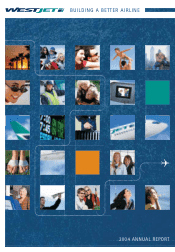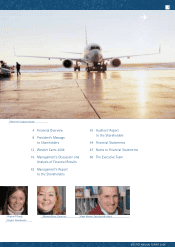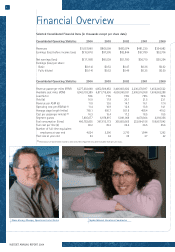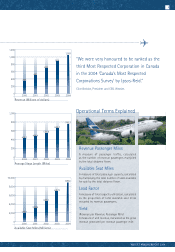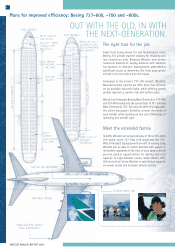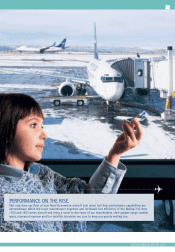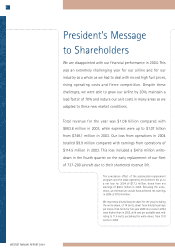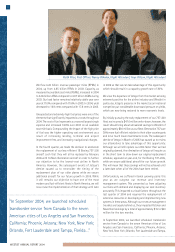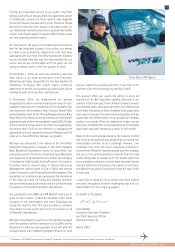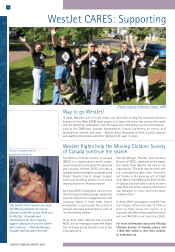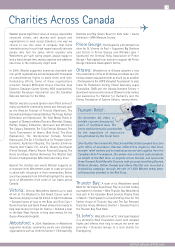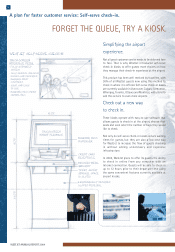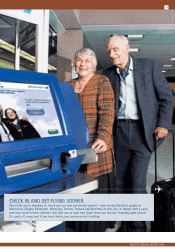Westjet 2004 Annual Report Download - page 6
Download and view the complete annual report
Please find page 6 of the 2004 Westjet annual report below. You can navigate through the pages in the report by either clicking on the pages listed below, or by using the keyword search tool below to find specific information within the annual report.
National pride
Custom Paint job
Winglets for added
fuel efficiency
Sattelite Antenna
–800 Series
–600 Series
Best window
seat before
the wing
Best Seat in
the house
Galley – mmm
cookies and
pretzels
More or less –
seating plans
to accommodate
the market
Live
Satellite TV
in Every
seatback
Two–way
Traffic
166 Guest capacity
119 Guest capacity
Best
window
seat After
the wing
WESTJET ANNUAL REPORT 2004
6
Plans for improved efficiency: Boeing 737-600, -700 and -800s.
The right tool for the job.
Aside from being known for low maintenance costs,
Boeing 737 aircraft lead the industry for reliability and
low operating costs. Because WestJet now serves
numerous markets of varying distance with seasonal
fluctuations in demand, management undertook a
significant study to determine the most appropriate
aircraft to fly the airline into the future.
Compared to the airline’s 737-200 aircraft, WestJet’s
Next-Generation aircraft are 30% more fuel efficient
on an available seat mile basis, while offering guests
greater legroom, a quieter ride and leather seats.
WestJet will integrate Boeing Next-Generation 737-600
and 737-800 models into the current fleet of 737-200 and
Next-Generation 737-700 aircraft. With this approach,
the airline has greater flexibility to meet the needs of
each market while building on the cost efficiencies of
operating one aircraft type.
Meet the extended family.
In 2005, WestJet will accept delivery of three 737-600s
(119 seats), seven 737-700s (136 seats) and five 737-
800s (166 seats). Equipped with aircraft of varying sizes,
WestJet will be able to match demand with supply in
its markets regardless of the time of year. Larger aircraft
provide greater opportunities for adding low-cost
capacity to high-demand routes, while smaller 737-
600 aircraft will allow WestJet to add limited capacity
on newer routes and between smaller centres.
OUT WITH THE OLD, IN WITH
THE NEXT-GENERATION.
–700 Series

